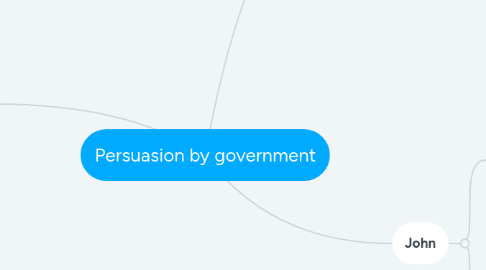
1. Nabatchi
1.1. Coproduction
1.1.1. Involvement of both users and public sector professionals
1.1.2. Who is involved?
1.1.2.1. State actors
1.1.2.2. Lay actors
1.1.2.2.1. Citizen
1.1.2.2.2. Client
1.1.2.2.3. Costumer
1.1.3. When takes activity place?
1.1.3.1. Co-commissioning
1.1.3.1.1. What needs to be delivered, to whom, and to achieve what outcomes
1.1.3.2. Co-design
1.1.3.2.1. Incorporate the experience of users and their communities into the creation, planning or arrangments of public services
1.1.3.3. Co-delivery
1.1.3.3.1. Joint activities to improve the provision of public services
1.1.3.4. Co-assessment
1.1.3.4.1. Monitoring and evaluating public services
1.1.4. What is the activity?
1.1.4.1. Individual coproduction
1.1.4.1.1. Personal benefits
1.1.4.2. Group coproduction
1.1.4.2.1. Personal benefits for group members
1.1.4.3. Collective coproduction
1.1.4.3.1. Social benefits
2. Bell
2.1. Persuade people to change behaviour
2.1.1. Campaigns
2.1.2. Social obligation
2.2. Markets, hierarchies & networks
2.3. Society centered vs. state-centric relations
2.3.1. Governance vs. government
2.3.1.1. Governance
2.3.1.1.1. Involvement of a larger range of non-state actors in governance processes
2.3.1.1.2. Marginalization of government
2.3.1.2. Government
2.3.1.2.1. Have extended hierarchical controls
2.3.1.2.2. Retain an overall responsibility for meta-governance
2.3.1.2.3. are able to enhance their capacity to achieve policy goals
3. John
3.1. Information as a tool of government
3.1.1. Public information campaigns
3.1.1.1. Media, sponsoring, leaflets etc.
3.1.1.2. Info needs to pursuade
3.1.1.3. Weakness: no compusion involved
3.1.1.4. Too much info results in losing effect
3.2. Techniques of persuasion
3.2.1. Framing
3.2.2. Social pressure
3.2.3. Nudging
3.2.3.1. Liberal paternalism
3.2.3.2. Low cost of behavioural interventions
3.2.3.3. Complements conventional policy instruments
3.2.3.4. Weakness: not strong enough
